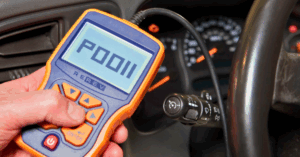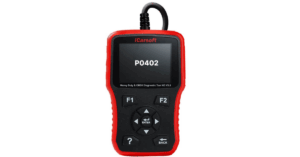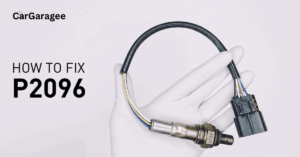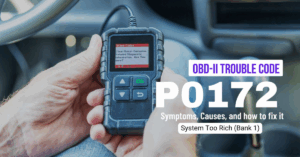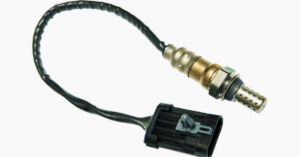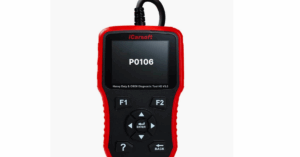Owning a Honda means driving a luxury car that stands for consistency and reliability, but even the most well-built vehicles need routine maintenance and repair to ensure the continue to run efficiently for as long as possible. Honda A123 service includes an oil change, tire rotation, and transmission fluid replacement, making it important for maintaining performance and longevity.
If you drive a CRV, Pilot, Accord, Odyssey, or Civic, staying ahead with proper maintenance prevents costly repairs and keeps your car in peak condition. Based on my experience, neglecting these key services often leads to performance issues, so following the recommended schedule is the best way to protect your investment.
What is an A123 Service Mean?
The Honda maintenance reminder is an important alert system that signals when an inspection is due, helping owners stay on top of servicing needs. The Minder system displays a number and digit code to determine the type of service required, with A123 being a common Acura code.
This service includes an oil and filter change, tire rotating, air filter replacement, and gearbox fluid change. Since the protective properties of fluids diminish over time, waiting an excessive amount can cause mechanical damage and lead to expensive repairs.

Checklist Included in A123 service
1. Oil and Filter Replacement
The first crucial part of the A123 service is an oil and filter change, ensuring the Honda engine operates smooth and efficiently. Fresh oil lubricates and cools key components, preventing premature damage and avoiding costly repairs. The filter is equally important, as it keeps the oil clean and free from impurities that could harm the engine.
A blocked filter can lead to sludge buildup, which may result in a limited lifespan for the engine. Through my experience, I’ve seen how neglecting this process causes severe engine wear, reinforcing the importance of timely maintenance to protect performance and longevity.
2. Tire Rotation
Regular rotation is necessary to ensure even wear on your tires, preventing premature deterioration and improving how your Honda handles efficiently on the road. Uneven tire wear affects traction, especially on various types of surfaces, which can have a serious effect on how the car performs under certain conditions.
To avoid issues, Honda recommends rotating tires every 3000-5000 miles for better stability and performance. During this process, tire pressure and quality are also checked to make sure all four tires wear evenly, improving safety and extending the lifespan of your tires.
3. Change of Air, Pollen, and Cabin Filter
The air filters in a Honda are essential components that work together to prevent dust and harmful pollutants from entering the motor, ensuring smooth operation and engine efficiency. Over time, these filters collect debris and must be changed regularly for the best performance. A clogged filter can reduce airflow, affecting fuel efficiency and engine health.

Additionally, the cabin filter helps eliminate unwanted odors that may have gathered over time, improving air quality inside the vehicle. Based on my experience, timely filter replacement not only protects the engine but also enhances the overall driving experience by keeping the interior air fresh and clean.
4. Transmission Oil
The transmission fluid plays a vital role in keeping a Honda or Acura running efficiently by lubricating the gears and ensuring they operate smoothly. It also keeps the system cool and provides the necessary hydraulic pressure for a seamless gear shift.
Over time, if the fluid becomes dirty or insufficient, it can cause a variety of issues, such as rough shifting or overheating. Certain models also have a transfer case that may need to be changed, as it serves an important function in enabling smooth movement and maintaining overall stability.
Honda Maintenance Code Comparison
| Maintenance Code | Service Details | Recommended Interval | Importance |
|---|---|---|---|
| A1 | Oil change, Tire rotation | Every 5,000-7,500 miles | Ensures engine lubrication and even tire wear |
| A123 | Oil and filter change, Tire rotation, Air filter replacement, Transmission fluid change | Varies by model, typically every 15,000-30,000 miles | Prevents engine damage, improves performance, and ensures smooth gear shifts |
| B1 | Oil and filter change, Tire rotation, Brake inspection | Every 5,000-7,500 miles | Maintains braking efficiency and prolongs engine life |
| B123 | Oil change, Filter replacement, Transmission fluid replacement, Drive belt inspection | Typically 30,000-50,000 miles | Essential for long-term vehicle health and avoiding costly repairs |
| P050D (Error Code) | Cold start rough idle issue | No fixed interval (when an issue arises) | Indicates fuel system or ignition problems that need immediate attention |
| P0505 (Error Code) | Idle control system issue | No fixed interval (when an issue arises) | May cause stalling and rough idling, requiring throttle body inspection |
When Should You Get an A123 Honda Service?

The Honda Motor Company designed the Maintenance Minder system to display the A123 code on the dashboard when it’s time for a routine service, ensuring optimal performance. Knowing in advance which maintenance activity your vehicle may require helps prevent unexpected repairs. Based on approximate mileages, an oil change and tire rotation are recommended every 5,000-7,500 miles, while the air cleaner element and cabin filter replacement should be done between 15,000-30,000 miles.
A transmission fluid change is essential at 50,000-100,000 miles, but the exact service timeline for a CR V, Accord, or any given model depends on driving conditions, which can be varying across vehicles.
What Is The Cost Of The Honda A123 Service?
The Honda A123 service cost can vary based on where you select to have your car serviced. Typically, the costs are around $375, with labor and parts totaling between $250 and $500. The most luxurious component of the service is labor, ranging between $150 and $300, depending on the location and expertise of the mechanic.
From my experience, choosing a reputable service center may cost more upfront but ensures quality maintenance, which can prevent expensive repairs in the long run.
How To Reset Honda A123
Read More:
How Much Does It Cost to Lower a Car? Shocking Details
Why Is Smoke Coming Out of Car Vents? Shocking Causes!
Why Regular Honda A123 Service is Essential
Regular Honda A123 service goes beyond just preventing unexpected breakdowns; it plays a key role in maintaining your car’s long-term performance, safety, and value. Many drivers overlook routine maintenance, but from my experience, keeping up with this schedule can save thousands in future repair costs.
1. Improves Fuel Efficiency
Neglecting basic maintenance like oil changes, air filter replacements, and transmission fluid checks can cause the engine to work harder, reducing fuel efficiency. Studies show that a clogged air filter alone can lower gas mileage by up to 10%. A properly serviced engine burns fuel more efficiently, helping you save at the pump.
2. Enhances Safety
Worn-out tires, low transmission fluid, and delayed servicing can lead to serious safety hazards. A well-maintained vehicle ensures brakes, tires, and other critical components function optimally, reducing the risk of accidents.
According to the National Highway Traffic Safety Administration (NHTSA), mechanical failures contribute to nearly 12% of car crashes in the U.S. every year—many of which could have been prevented with proper maintenance.

3. Maintains Resale Value
A Honda that has been consistently serviced holds its resale value much better than one with irregular maintenance history. Buyers are willing to pay more for a vehicle with documented oil changes, tire rotations, and fluid replacements. Dealerships also offer higher trade-in values for cars that show signs of regular upkeep.
4. Extends Engine Life
Ignoring A123 service can lead to premature engine wear and expensive repairs. Replacing an engine can cost upwards of $4,000, while a transmission repair can easily exceed $3,500. On the other hand, routine oil changes, fluid top-ups, and belt inspections keep all engine components running smoothly, significantly increasing the lifespan of your Honda.
Real-World Example: Cost Savings Through Preventive Maintenance
A Honda Accord owner who followed A123 service intervals consistently reported no major repairs even after 150,000 miles, while another driver who neglected maintenance had to replace the transmission at just 90,000 miles, costing over $3,000.
FAQS
What is A123 Service for Honda?
The A123 code in the Honda Maintenance Minder system indicates that a vehicle is due for essential service to maintain performance and reliability. This service includes an oil change, tire rotation, and other crucial services such as replacing the air cleaner element, dust, and pollen filter, as well as inspecting the drive belt. If necessary, the transmission fluid and transfer case fluid, if the vehicle is equipped, should also be changed.
What Does Honda Code A1 Mean?
The A1 code can appear in the Honda Maintenance Minder System, notifying the driver that the vehicle is due for a routine oil change and tire rotation. This system proactively alerts owners when the engine life has reached 15%, prompting a notification to prevent wear and maintain efficiency. From my experience, timely response to this alert significantly improves vehicle longevity.
Does Honda Recommend Changing Transmission Fluid?
Yes, Honda recommends changing the transmission fluid based on the right interval for each vehicle. The timing depends on the model and type of transmission, but it is typically suggested every 50,000-100,000 miles.
Checking the owner’s manual for specific information ensures proper maintenance, helping to prevent mechanical issues and improve overall performance.
What is the Error Code for Rough Idle?
The error code P050D is a generic trouble code related to rough idle during a cold start, indicating an issue with how the engine operates right after ignition. This Diagnostic DTC stands for “Cold Start Rough Idle”, which can be caused by fuel system inefficiencies, faulty ignition components, or airflow issues.
What is the Service Code B123 on a Honda?
The Honda B123 Maintenance Minder Code indicates that a vehicle is due for regular maintenance, ensuring longevity and performance. This code includes essential activities such as oil and filter replacement and a thorough breakdown of key servicing needs. Keeping up with this maintenance schedule helps prevent costly repairs and enhances the engine’s efficiency.
What is the Code for Bad Idle Air Control?
The Diagnostic trouble code (DTC) P0505 stands for “Idle Control System”, which is often accompanied by erratic idle speeds that may lead to stalling and other issues. In older vehicles, this problem usually relies on the air control valve (IAC) near the throttle body, which regulates airflow to maintain a steady idle.
Through my expertise, I’ve found that a failing IAC valve can lead to unpredictable engine behavior, making it crucial to address the issue as soon as possible.

Mian Hashir is a passionate automotive enthusiast and the lead author at Car Garagee, a website dedicated to providing in-depth car reviews, maintenance tips, and the latest news in the automotive world. With years of experience in the industry, Hashir combines his technical knowledge with a love for cars to deliver insightful and engaging content. Whether you’re a car owner or a curious reader, Mian Hashir’s articles help readers make informed decisions, from choosing the right vehicle to understanding how to keep it in top condition.


